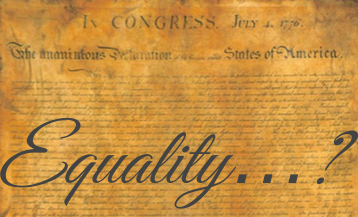Oklahoma City, Oklahoma: Tearing Away At The Foundations
In Oklahoma City, another Ten Commandment monument has met its end. The Oklahoma Supreme Court reaffirmed in a 7-2 decision Monday that a Ten Commandments monument on the state Capitol grounds is unconstitutional and must be removed.
Was the Oklahoma Supreme Court correct in their decision? And why does this matter to you and me?
Under current federal law, Ten Commandment displays are completely constitutional. The First Amendment of the U.S. Constitution says, “Congress shall make no law respecting the establishment of religion, or prohibiting the free exercise thereof.” A Ten Commandment display does not constitute an “establishment of religion”. When writing this, the Founders were intending to avoid a state sponsored religion such as the Church of England from which they had just freed themselves.
So, federally speaking, the display is Constitutional. However, in this particular instance, Oklahoma’s Supreme Court cited Article 2, Section 5 of the Oklahoma State Constitution which says, “No public money or property shall ever be appropriated, applied, donated, or used, directly or indirectly, for the use, benefit, or support of any sect, church, denomination, or system of religion, or for the use, benefit, or support of any priest, preacher, minister, or other religious teacher or dignitary, or sectarian institution as such.”
Just like the men that write them (and those that interpret them), human laws are fallible. And a law that prohibits the display of the Ten Commandments is one such law. The Constitution of Oklahoma can and should be changed because, among other reasons, our government has long recognized the vital importance of religion in government.
Signer of the Declaration John Witherspoon, said, “[T]o promote true religion is the best and most effectual way of making a virtuous and regular people. Love to God and love to man is the substance of religion; when these prevail, civil laws will have little to do.”
Justice Joseph Story, who served on the Supreme Court said, “I verily believe Christianity necessary to the support of civil society. One of the beautiful boasts of our municipal jurisprudence is that Christianity is a part of the Common Law. . . . There never has been a period in which the Common Law did not recognize Christianity as lying its foundations.”
Keeping the Ten Commandments in the public eye is also extremely reasonable based on the long history our country has of public displays. To demonstrate this, I would like to quote from “An Affidavit in Support of the Ten Commandments” by the noted historian, David Barton. I strongly suggest you read it in its entirety, but here I will quote what I think answers our first question quite concisely.
Mr. Barton expertly points out how ingrained in our history the symbols of the Decalog and Moses are: “.....Adorning the top of the walls around the House Chamber are the side-view profile reliefs of 23 great lawgivers, including Hammurabi, Justinian, John Locke, Thomas Jefferson, William Blackstone, Hugo Grotius, George Mason, and 16 others. Significantly, there is only one relief of the 23 that is full faced rather than in profile, and that one relief is placed where it looks directly down onto the House Speaker's rostrum, symbolically overseeing the proceedings of the lawmakers. That relief is of Moses.
“....the Ten Commandments adorn several of the more important government buildings in the nation's capitol. For example, every visitor that enters the National Archives to view the original Constitution and Declaration of Independence….must first pass by the Ten Commandments embedded in the entryway to the Archives. Additionally, in the U. S. Supreme Court are displayed two depictions of the Ten Commandments. One is on the entry into the Chamber, where, engraved on the lower half of the two large oak doors, are the Ten Commandments. The other display of the commandments is in the Chamber itself on a marble frieze carved above the Justices' heads. As Chief Justice Warren Burger noted in Lynch v. Donnelly:”
“The very chamber in which oral arguments on this case were heard is decorated with a notable and permanent-not seasonal-symbol of religion: Moses with the Ten Commandments.”
“Other prominent buildings where large displays of the Ten Commandments may be viewed include the Texas State Capitol, the chambers of the Pennsylvania Supreme Court, and scores of other legislatures, courthouses, and public buildings across America. In fact, the Ten Commandments are more easily found in America's government buildings than in her religious buildings, thus demonstrating the understanding by generations of Americans from coast to coast that the Ten Commandments formed the basis of America's civil laws.”
There are many calls for “equal time” for all other groups who want monuments. For example a Satanist “church” attempted to have a monument to their “religion” erected there in Oklahoma City. However, this call for “equal time” is preposterous. The Ten Commandments have a long history in America. The impact that they had on our country’s founding and laws are unquestionable (again, if you have any doubts - Read)
 |
| The First Prayer in Congress |
But what of these other groups demanding “equal time”? Where is their contribution and impact on our country’s history? The Ten Commandments have been honored and displayed because of their role in our country’s history. These other groups cannot claim the same.
If all that isn’t enough, I believe displaying the Ten Commandments is necessary. As noted above, it is part of the basis of Common Law and our governing documents. When you remove the foundations, the building falls.
Jonathan Paine
@painefultruth76


Comments
Post a Comment